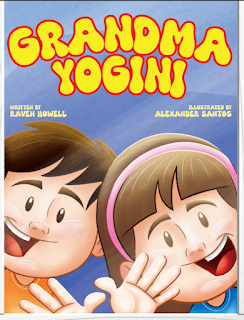Several years ago, I watched an interview on YouTube featuring Park Seojoon and Sam Oh at a fan meet in Manila. He was asked to guess which Korean food Filipinos liked most. Without hesitation, he answered, “Bibimbap.” As it turns out, that wasn’t the top choice but now, after a recent trip to Seoul during Festa Season, I understand why PSJ said it so confidently.
Photo by Neil Johann Matias
Bibimbap: A Bowl of Rainbow
Bibimbap is a humble dish, yet it’s packed with flavor and nutrition. A single bowl offers a balanced mix of carbohydrates, protein, fiber, and essential vitamins. It was served to us sizzling in a hot stone bowl, so pretty to look at, with the vibrant colors of assorted vegetables like a rainbow. On top sat one bright egg yolk, waiting to be stirred into its nourishing companions. That afternoon, it became our lunch on our first full day in Seoul: a glowing bowl of veggie bibimbap, hot and vibrant, just like the city itself.
What followed was a long walk through the Gangnam district—up a steep incline, then along a quiet slope that led to a narrow alley, where Hyuga Café, Bangtan’s old dorm, now stands. We sat there to rest our feet. Although fans and ARMYs arrived in small waves, there was a hush in the air—a quiet reverence for the place where the Tannies once lived during their salad days.
We were lucky: we met the popular ARMY vlogger Tom Koods, who graciously said yes to a photo. Then we continued our walk to the old Big Hit building. The energy there was just as still, just as electric. ARMYs really are something.
This lived experience is beyond fangirling. This is, truly, a pilgrimage.
In contrast to the gloss and shine of Hangang-daero, this street in Gangnam, where the old Big Hit building still stands, evokes a sacred nostalgia. Up on that rooftop is where the Tannies once poured out their heartaches, expectations met and unmet. The video is still on YouTube, and now, here I am, sharing this moment with my ARMY daughter.
The building may have a new owner now, but the writing on the walls—left by ARMYs—will never fade. Because, truly, it is written in the heart.
Hakdong Park and Yoojung Sikdang
We continued walking toward Hakdong Park, a quiet corner of the city where Bangtan used to hang out after training—or in between long practice sessions. The legendary swing, where RM and Jimin once sat, became a kind of station for us too—a place to pause, to recreate a moment of conversation, brotherhood, and rest.
While we were there, I took out my sketchbook and began to draw. I painted the flowers, hydrangeas, I think, that grow along the sidewalk in front of Hyuga Café. It was my way of marking the moment. Not just passing through, but remembering with my hands.
From Hakdong Park, we walked a few blocks more. My ARMY daughter and I marveled at the urban architecture—part brutalist, part unexpectedly traditional. We couldn’t help but wonder how, in the midst of such modernity, tiled-roof houses still stood with quiet dignity.And the vegetable wraps! Juicy, sweet, and minty. I didn’t expect perilla leaves to taste like oregano, with a hint of bitterness—but it worked. Every bite was simple yet surprising, like a dish that knows its story and doesn’t need to impress, only to nourish.
Each dish was modest yet nourishing: doenjang-guk, rich in probiotics and protein; spicy jeyuk bokkeum, high in energy and flavor; and fresh leafy ssam, balancing it all with fiber and vitamins. It was easy to see how food like this could sustain not just bodies in training, but hearts with big dreams and endless hope.
I am truly grateful to have experienced this gastro-cultural immersion on Day 1 of the ARMY tour. We weren’t just paying homage to the path the Tannies walked, we were also finally putting names to the flavors we’ve long seen in the stories of our favorite K-dramas.
In Hospital Playlist, the Lacking Five would devour huge wraps of spicy grilled pork after long hours in the operating room or late-night rounds. Yoo Yeonsoek's character, Dr. Ahn, would come home to his mother’s place and eat bibimbap with gusto and joy.
The Tannies kept returning to Yoojung Sikdang because, like many of us, they were far from home. And there, the ahjumma’s cooking humble, warm, and made with care fed not just their bodies. These meals weren’t luxury they were survival, comfort, and love in a bowl or wrap.
This is one face of Seoul we met on Day 1. And it will stay with us, long after the meals are over.







